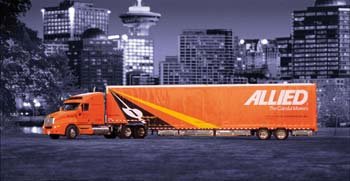articles/Lighting/thebiglight-page2
The Big Light - part 2 of 1 2
by Dave Montizambert Published 01/02/2008

The other consideration with this lighting scenario is colour or white balance. Many photographers with digital SLRs set their white balance (WB) to Auto or better still do a custom WB off a neutral tone or from an Expodisc. Using any one of these solutions would normally be fine, however, in this image I wanted to preserve the flavour of warm 'magic hour' light and using either Auto WB or a custom WB neutralis es the golden colour balance of a sunset. To solve this minor problem I set WB to daylight; this captured a beautiful warm light, giving the open sky lighting a warm glow on the truck.
The colour balance of the light changes rapidly towards warm as the sun dips lower in the sky; every few minutes the warmth increases significantly. If you feel that the warmth is too much you can easily notch it back during processing of the files in applications such as Adobe Camera Raw or Adobe Lightroom. If you find changing the colour balance and tint sliders a little challenging, consider making two versions of the image, one with full warmth 'as captured' and one in which you neutralised the image in Adobe Camera Raw or Adobe Lightroom on a neutral colour in the image, by clicking on it with the WB selector tool. With both image variations open in Adobe Photoshop, hold down the shift key on your keyboard as you click and drag the background layer of the neutralised image into the open window of the warm image. Turn down the layer opacity (the slider at the top right corner of the layer's palette) of the neutralised image until just enough warmth shows through. This method will ensure that you keep the exact balance between Colour Balance and Tint as you lessen the warmth.
The final consideration for the capture of this image was exposure. An incident meter was positioned with its back to the truck and the front facing the open sky, above the camera. As the sun dropped lower and lower, which happened very rapidly, so did the exposure. But, because the sky is so far away from the truck, it of course made no difference whether I walked the 160 feet from the camera to the truck to take my readings or whether I took the readings beside the camera - the further away the light-source, the more light depth of field there is. Which means, if the light source is far enough away - and the open sky was - then no measurable brightness difference will occur between two points even though one might be closer to the light source than the other. This made my job easier; I was able to take incident meter readings (about one every minute or so) and adjust shutter speed without having to step away from the camera.
Once the image was opened into Photoshop on my workstation back at the studio, I selected and deleted the background behind the truck and trees, then pasted in one of my stock images of the Vancouver Skyline (see image 04). To make the truck really jump out of the image and to create a surreal feeling I selected the truck, inverted that selection, created a Hue and Saturation Adjustment layer (see image 05), clicked on the Colorize option, and then dragged the Hue slider to 241 and Saturation to15. This gave everything but the truck a steel blue tint and completed the image (see image 06).
As you can see, having to light and photograph a large shiny object like this 80 foot semi need not send you to your knees as long as you can shoot outdoors with unhindered open sky using these few simple principles from above.
Timing: Late September (Sept 22) around sunset
Camera Distance: 160 feet
Camera: Hasselblad ELM with Sinar 54H digital back
Lens: Hasselblad/Zeiss 150mm
Exposure: f11 from 1/8th to 2 seconds, single shot mode
CAMERA TECHNICAL DETAILS
The Sinar 54H digital back is a 22MP (sensor size - 49mm x 36.7mm) digital capture - 5440 x 4080 pixels, creating a 130mb 16-bit file. It can also be shot in 4 or 16 shot mode. Sixteen shot mode creates a 510mb, 16-bit file. I shot in single shot mode since you need vibration-free shutters for 4 or 16 shot mode ; the Hasselblad shutter shakes too much. Literature claims more than 11 stops of dynamic range for this 14-bit capture. ISO range is currently at 50 to 200. I shot at 100 ISO
Please Note:
There is more than one page for this Article.
You are currently on page 2 Contact Dave Montizambert
1st Published 01/02/2008
last update 09/12/2022 14:59:39
More Lighting Articles
There are 0 days to get ready for The Society of Photographers Convention and Trade Show at The Novotel London West, Hammersmith ...
which starts on Wednesday 15th January 2025





